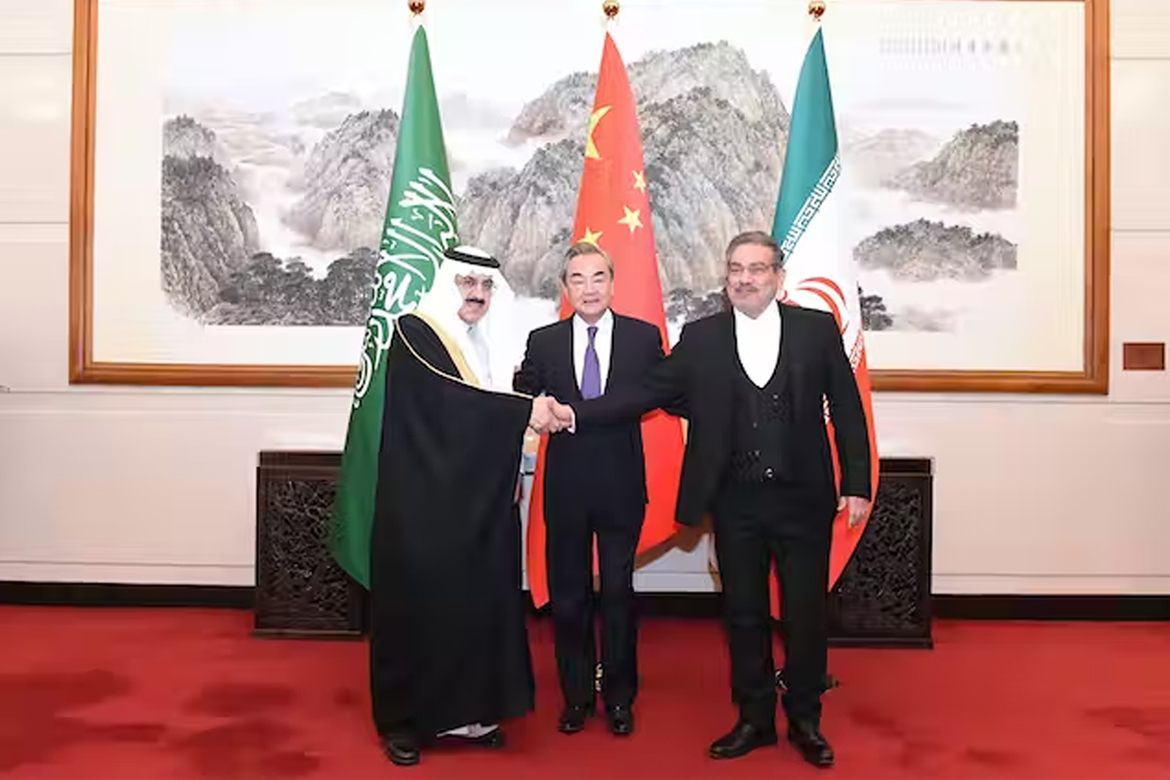As President Xi Jinping begins his third term in office this week, it seems that China has abandoned its once low-profile foreign policy and now seeks to assert itself as an imperial state that safeguards its global interests.
The projection of this image is at the centre of the country’s ambitious new Silk Road initiative, also known as the Belt and Road Initiative (BRI).
Iran, a critical land-based Silk Road destination, is of great importance, while Saudi Arabia and the Gulf region are key links in the Maritime Silk Road.
Xi’s pivotal visit to Riyadh at the end of last year was crucial in paving the way for a breakthrough in the long-standing impasse between Saudi Arabia and Iran.
Initially, both Iran and the United States were concerned and held contrasting views about China’s growing ties with Saudi Arabia. However, Xi’s visit was a game changer that led to China brokering a deal to restore diplomatic relations between the two key Middle Eastern countries after seven years of estrangement and escalation.
China’s strategic interest in the Middle East lies in securing energy sources and markets. It is the top buyer of Saudi crude oil, importing 81 million metric tonnes in 2021, worth $43.93bn.
Weakened US role
China is not seeking to undermine America’s role in the Middle East. Instead, China is benefiting from the relative decline of US influence there, specifically from the shifts that have occurred with the last three US presidents.
Obama prioritised a nuclear deal with Iran at the expense of Saudi and Gulf interests. During Obama’s presidency, Iran’s allies dominated Iraq, Syria and Lebanon, and the Houthis in Yemen were advancing towards Bab al-Mandab.
Donald Trump cancelled the deal with Iran and initiated a weak peace project with Israel that undermined the idea of land for peace, putting Saudi Arabia, whose Arab Peace Initiative was based on this very concept, in an embarrassing situation.
US President Joe Biden, who promised to re-engage with Iran and treat Saudi Arabia like a pariah during his election campaign, found himself in Riyadh asking the Saudi Crown Prince Mohammed bin Salman to increase oil production, amidst the fallout from the Russia-Ukraine war, and receiving a cold reception from the kingdom.
After these three experiments, China opened up to Iran, Saudi Arabia, and Israel, at the expense of America’s role in the region.
The US has repeatedly expressed concern over China’s growing influence in the region, particularly its ties to Iran, which has had a tense relationship with the US since the 1979 Islamic Revolution, and Saudi Arabia, which has been a longtime ally of the US but has experienced tensions during the Obama and Biden presidencies.
Similarly, Washington has exerted persistent pressure to limit the development of Sino-Israeli economic cooperation.
Although China has faced disputes with its close neighbours, such as India, Japan and Vietnam, and has sought to establish a network of influence in Central Asia, which has been dubbed “Sinostan” in a book by Raffaello Pantucci and Alexandros Petersen, it must also coexist with Russian hegemony in that region. However, the Middle East presents a vast opportunity for China due to its abundant resources and strategic location.
News source: Middle east eye



